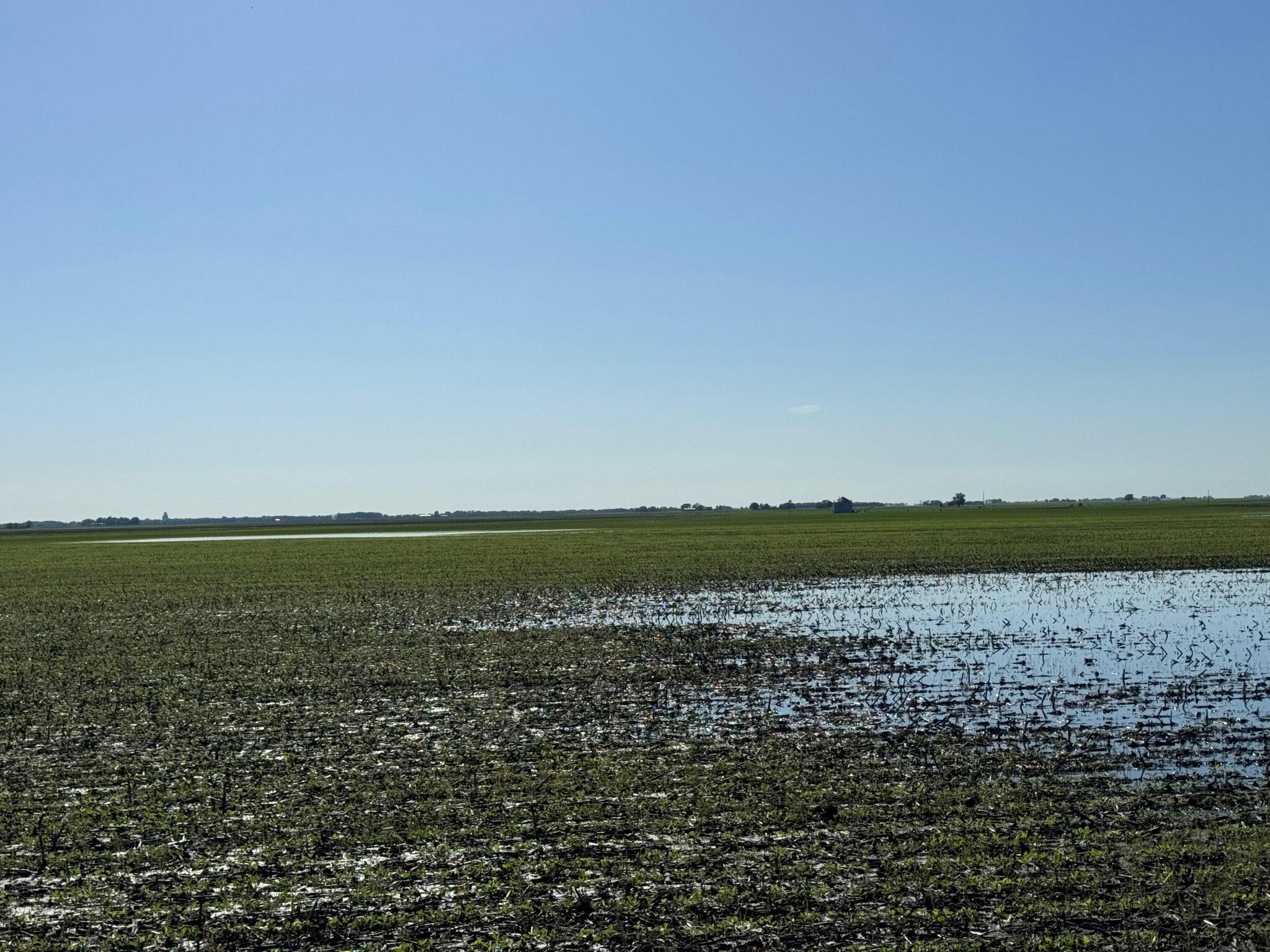Rains have left many fields with standing water and the threat of more rain on the way. In a manner of a few miles, one field received one inch of rain and another field has received 3 inches of rain or more. This story is present across the Midwest. Standing water and ponding has raised the concern of effects on soybeans (Figure 1).

Figure 1. Standing water one day after 3.5 inches of rain. Soybeans are approximately V2. Picture was taken May 25, 2024.
Needless to say, many fields of soybean are struggling with wet feet. The effect on soybean will be related to the growth stage, duration of standing water, temperature, and sunlight/cloud cover.
Saturated and ponded conditions will be limiting oxygen in the root profile, which can cause root and nodule death over prolonged periods. Oxygen is depleted as the roots are trying to respire and utilize the photosynthates that have been produced and translocated from the leaves to the roots. Dissolved oxygen is present in the water, but that will be quickly used. Warmer temperatures and sunny days will deplete the oxygen supply faster as the roots are trying to respire and use the abundant supply of photosynthates. Cloudy days tend to lessen the photosynthetic rates and prolong the plant survival until the water recedes.
Soybeans at young growth stages (VE to V3) can withstand standing water for several days before having impacts on roots, growth, and nodulation. Roots and nodules will start to be compromised when water has been standing for more than 2 days. Soybeans (~V2-3) are naturally transitioning from soil supply of nitrogen (N) to nodules that will be fixing N from the atmosphere. This transition and N supply can be delayed and even reset depending on how long the roots and nodules are under saturated conditions. Detrimental effects to soybeans will start to occur after 4 to 6 days of standing water. The cycle of wetting and drying will be important as soils dry out and oxygen can enter the pore space of the soil even if another round of rain comes a week later and saturates the soil.
We are in a wait-and-see approach on these ponded sections or swiss cheese fields. Some might want to replant or overseed these ponded areas once the fields dry out again. Every situation is unique and the factors of time and cost-benefit must come into the equation. Ponded areas for a few days will likely not need any action even if the soybeans show some delays in growth, development, and N supply. Portions of the field that have been ponded for more than 4 days may still survive, but be restricted in height, node development, nodulation and N fixation, and even yield. However, these yield effects may not be as severe as planting late depending on when you can get back into the field. Late replanting will take time to develop and the operation will damage current stands (~20% loss of the current stand by the replanting operation). These considerations are assuming that the plant stand is still over 100,000 plants/acre in the ponded areas. If the plant stands are closer to 70,000 plants/acre in the ponded areas, you may consider replanting or overseeding to help fill in the gaps of a poor stand especially with plants that compromised.
As the fields start to dry out and these ponded areas are a concern, I suggest digging up the plants in these fields to assess if the nodules are white, red, or dead. White nodules are immature, but developing. Red or pinkish interior of the nodules indicates that N fixation has started. Brown to mushy nodules are dead and will not supply N. Young soybeans, V2 to V3, may only have three to five actively-fixing nodules (pink to red interior). Soybeans from V4 and onward should have eight or more actively-fixing nodules with more nodules developing. If soybeans do experience root death, sloughing off, and nodule death, new roots and nodules can form once the water recedes and oxygen enters the soil. Please see the following video from several years ago, that show the recovery stages and impact from saturated conditions to soybeans that were a little further along (V3-V4 when the saturated conditions started) along than our current situation.


